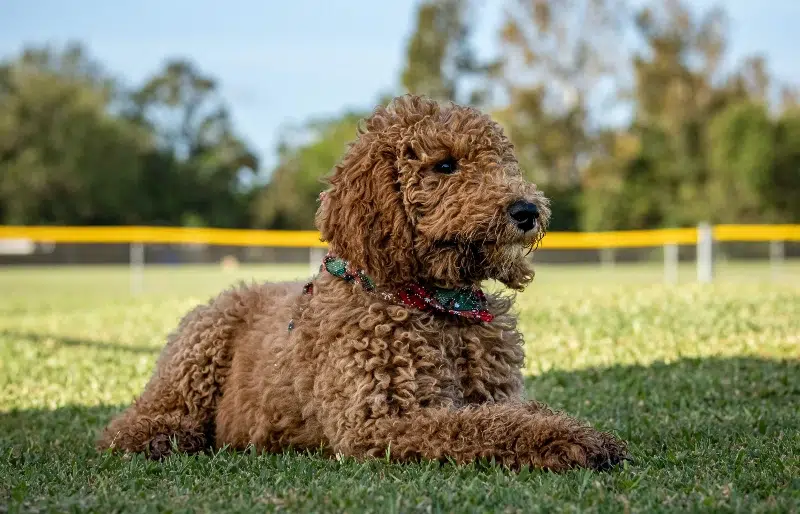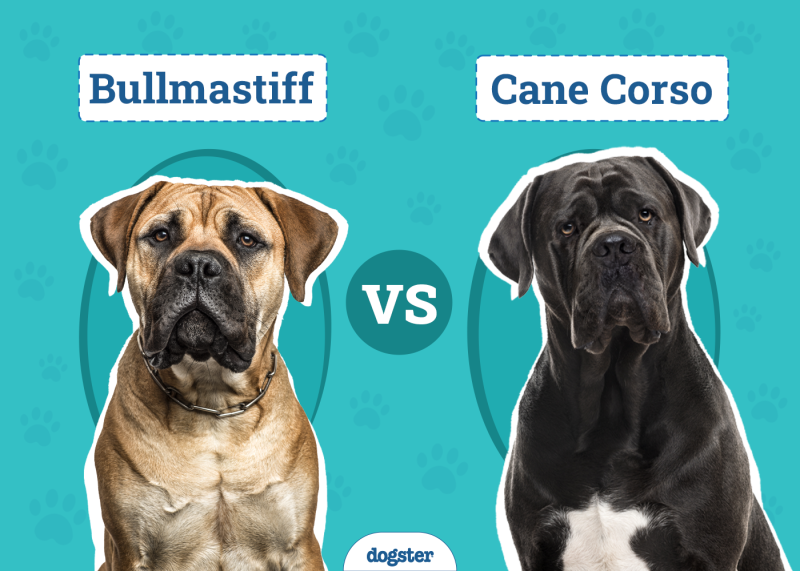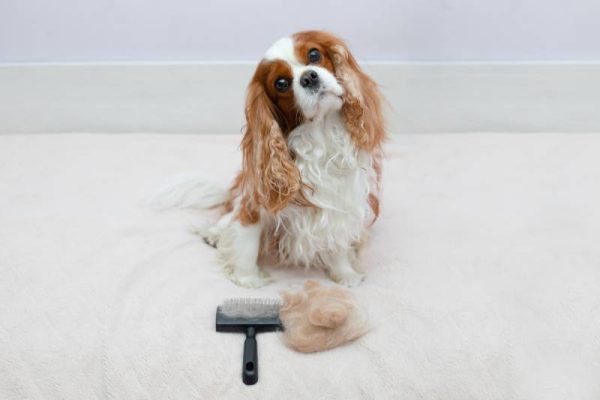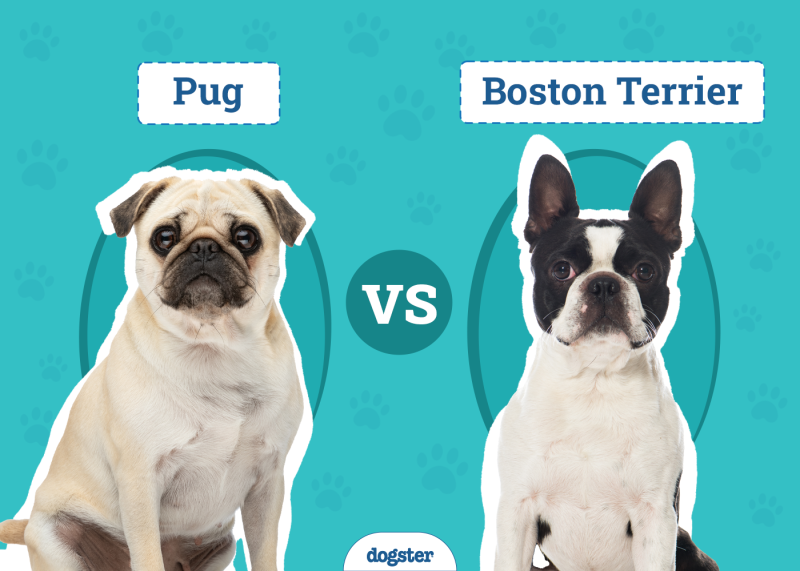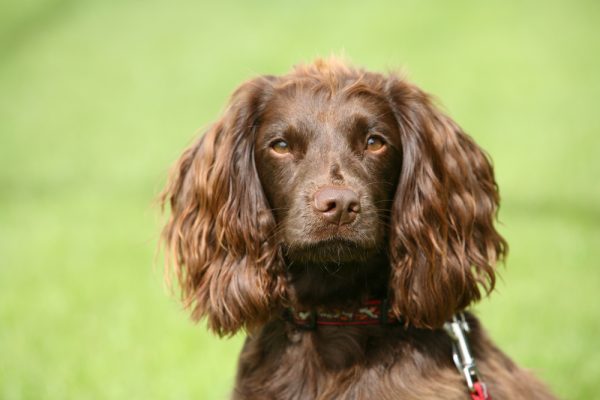In this article
The Goldendoodle is one of the most popular hybrid dogs, and it’s no wonder. When you combine the loving and social Golden Retriever with the intelligent and athletic Poodle, you can only end up with a fantastic dog!
If you are looking for a smart, social, energetic, and somewhat hypoallergenic dog, you need a Goldendoodle in your life. Goldens typically come in cream, golden, and red, but the Poodle comes in several colors and patterns, and so does the Goldendoodle.
In this article, we’ll explore the various colors and patterns in Goldendoodles, and maybe you’ll pick a favorite—or three!

The 18 Goldendoodle Colors & Patterns
Goldendoodles With Solid Colors
1. Apricot Goldendoodle
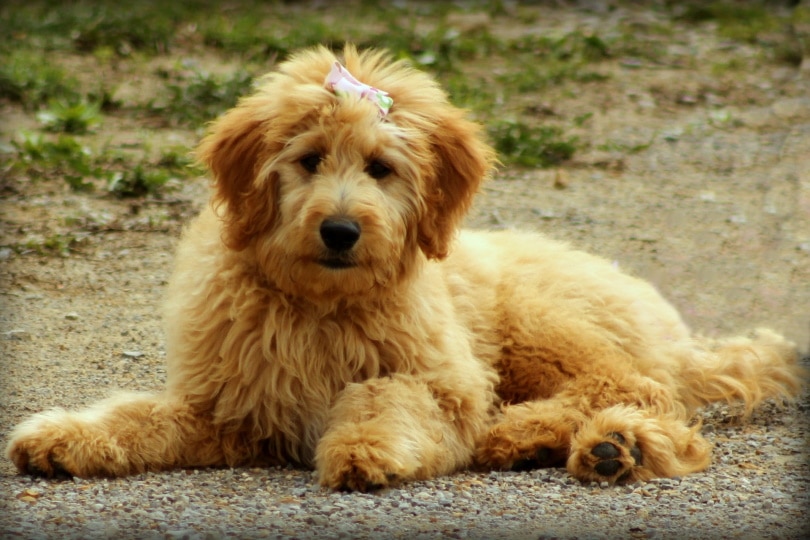
Apricot is a soft creamy red color and one of the most popular Goldendoodle coat colors. It’s slightly warmer than cream and lighter than red. Apricot is one of the American Kennel Club’s (AKC) officially recognized Poodle coat colors.
2. Black Goldendoodle
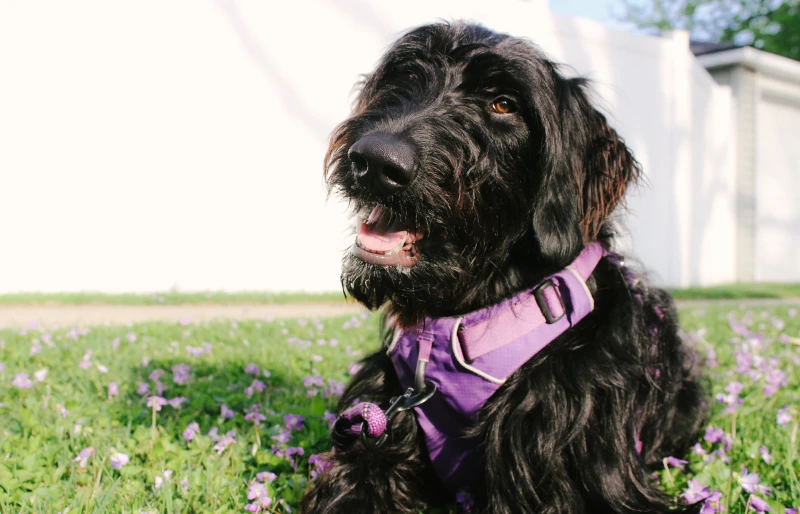
Black Goldendoodles are rare because to achieve this color, both the Poodle and Golden Retriever must carry a recessive black gene, which is the only way for the offspring to be entirely black. This includes the eyes, paw pads, noses, and of course, hair.
3. Blue Goldendoodle
A blue color on a Goldendoodle is essentially a combination of gray and black with a bluish hue. This rare color comes from breeding multiple generations of Goldens with blue Poodles.
4. Champagne Goldendoodle
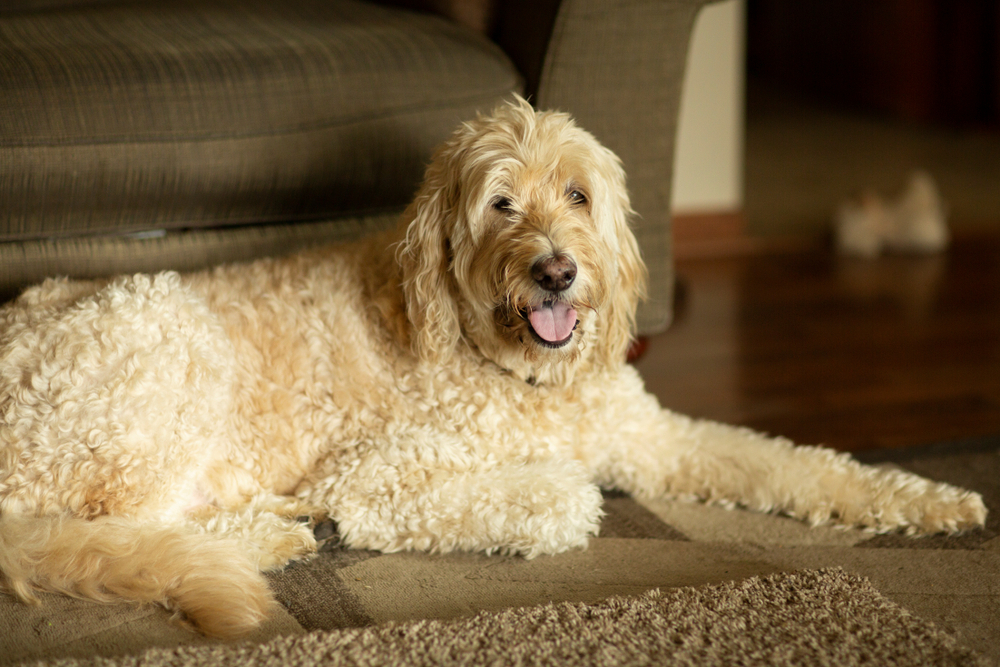
Champagne is a rare color for Goldendoodles, which is a pale yellowish hue on a pale coat. This color comes from a recessive dilute red gene, which can also have a light tint of apricot or gold.
5. Chocolate Goldendoodle
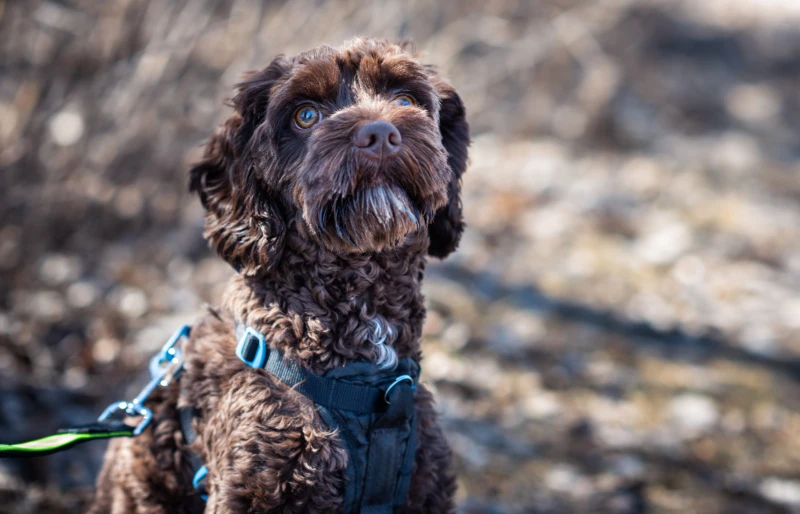
Chocolate Goldendoodles come in a range of brown colors, from warm chocolate to dark cocoa. They are often born almost black, which fades as they age, and they might even take on a silver color. This occurs because brown can sometimes carry a recessive gene color of silver or black. The AKC also recognizes brown as an official color, and it’s a popular one for Poodles.
6. Cream Goldendoodle
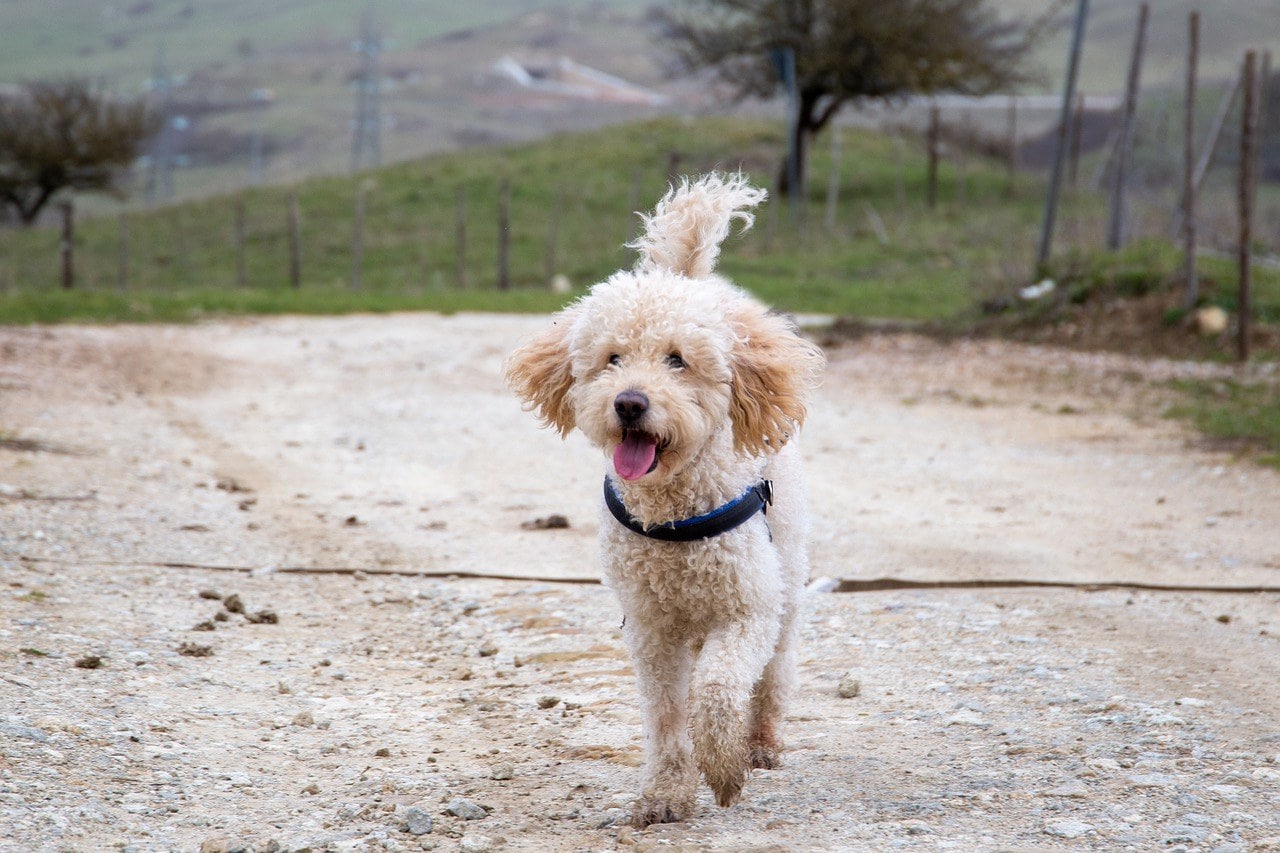
The Cream Goldendoodle gets their color from both parents because the cream Poodle is a recognized color, and the touch of gold comes from the Golden Retriever parent. This color has many variations, and the Goldendoodles can have pink or dark noses and varying shades of cream.
7. Gray Goldendoodle
Gray Goldendoodles are born very dark or even black, which fades as they age. They usually acquire their full silver color by 2 years of age. This is a relatively rare color that can only occur after multigenerational breeding.
8. Red Goldendoodle
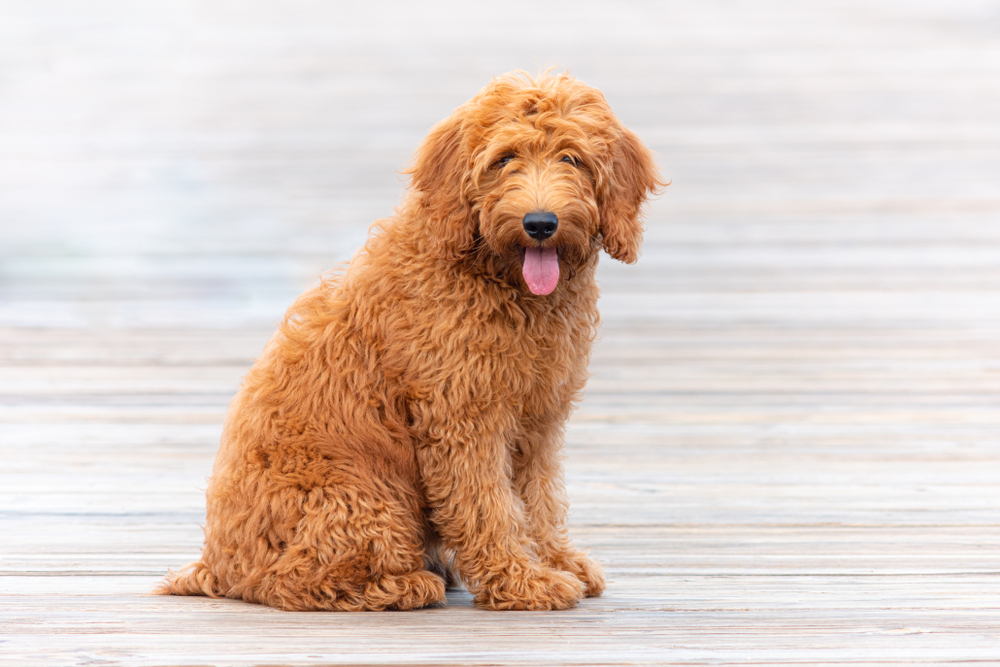
Red Goldendoodles are commonly sought after. This eye-catching color can occur when a dark Poodle mates with an average-colored Golden Retriever. Their color can range from deep ruby red and warm mahogany to cinnamon red.
9. Sable Goldendoodle
Sable gives the Goldendoodle the appearance of two colors due to the black-tipped brown fur. The dog is typically born chocolate or black, and the hair closer to the roots fades as they age. The base tends to be tan or cream, but the tips are always black or dark brown. The darker color is usually more concentrated around the face and ears.
10. Silver Goldendoodle
The Silver Goldendoodle is rare and a lighter variation of a blue or gray Goldendoodle. They are born darker, and the color fades until the silver is left, usually in about 2 years. You’ll notice the color change when they are about 6 to 10 weeks old.
11. Tan Goldendoodle
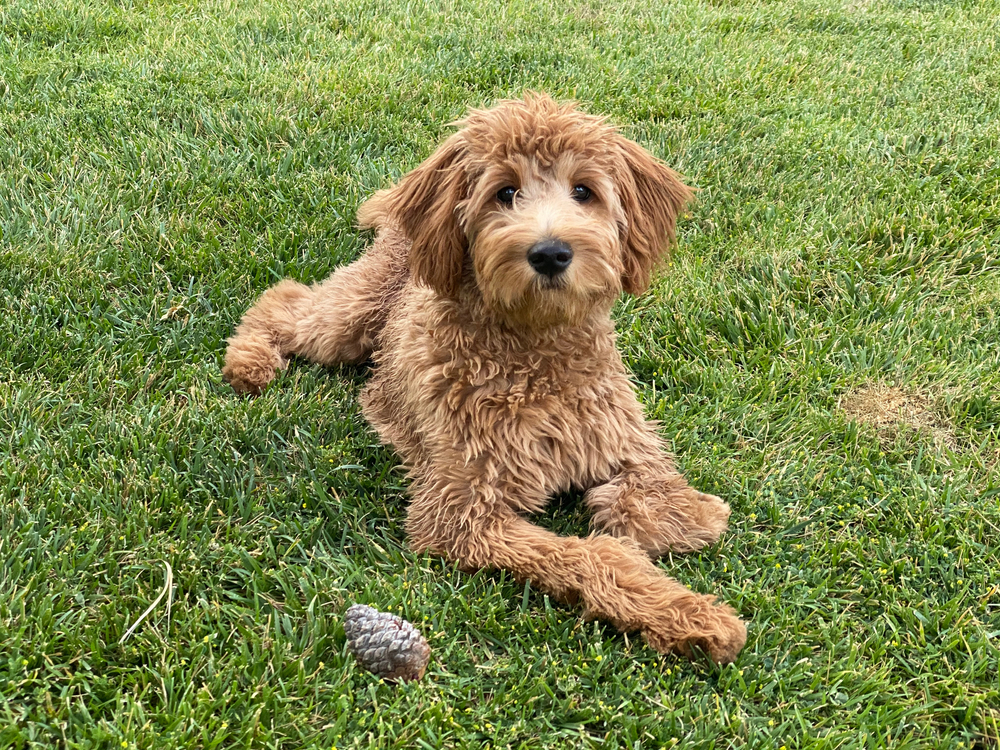
These Goldendoodles usually get their coloring from their Golden Retriever parent. It’s essentially a dilution of the red pigment, and many tan dogs also have shades of cream, white, or pale apricot mixed in. This gives the coat a golden tan color.
12. White Goldendoodle
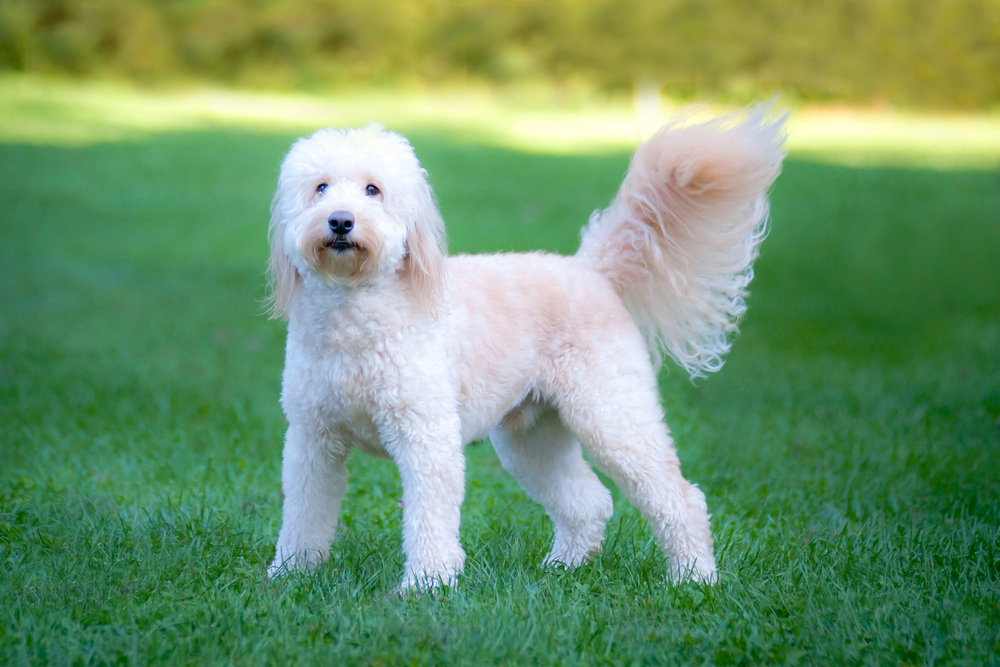
Since Golden Retrievers aren’t white, White Goldendoodles get their color from their Poodle parents. However, even these Goldendoodles aren’t typically pure white, and you might see shades of soft cream mixed in. Still, they are paler than Cream Goldendoodles.
Different Goldendoodle Patterns
13. Abstract Goldendoodle
The Abstract Goldendoodle has a color pattern featuring less than 50% white in the coat. This pattern is also referred to as chrome and mismark. The white color is typically found randomly on the face, chest, and legs without any discernable pattern. The dominant hue can be any color.
14. Brindle Goldendoodle
The brindle pattern is unique because it gives the coat an almost tiger-stripe look. It is usually a brown or black base with light red and brown stripes. Each Brindle Goldendoodle has a unique color and pattern variation, and in some cases, the striping won’t be that noticeable. This is a rare pattern that is a result of a recessive gene.
15. Merle Goldendoodle
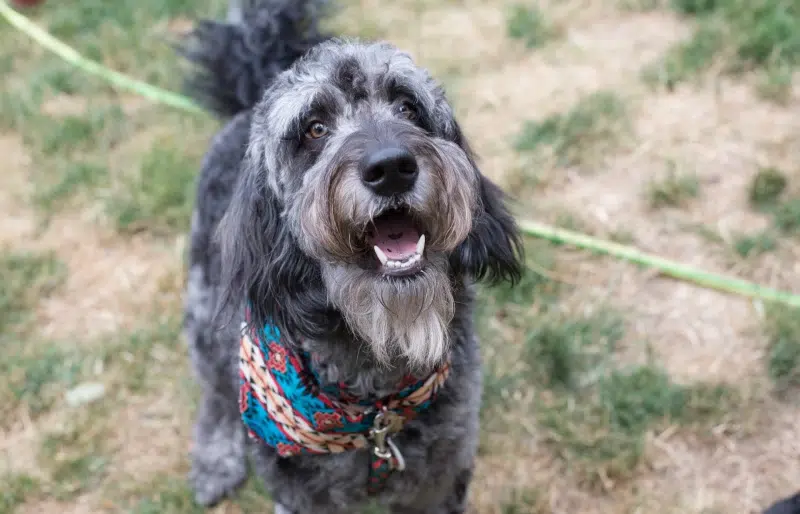
The merle pattern is not a natural pattern found in Poodles and technically only occurs when a Poodle is bred with an Australian Shepherd. It can sometimes happen in Goldendoodles when breeding two Goldendoodles together.
At least one parent must be merle, but two merle parents shouldn’t mate because the offspring are likely to be born deaf, blind, or with other defects.
16. Parti Goldendoodle
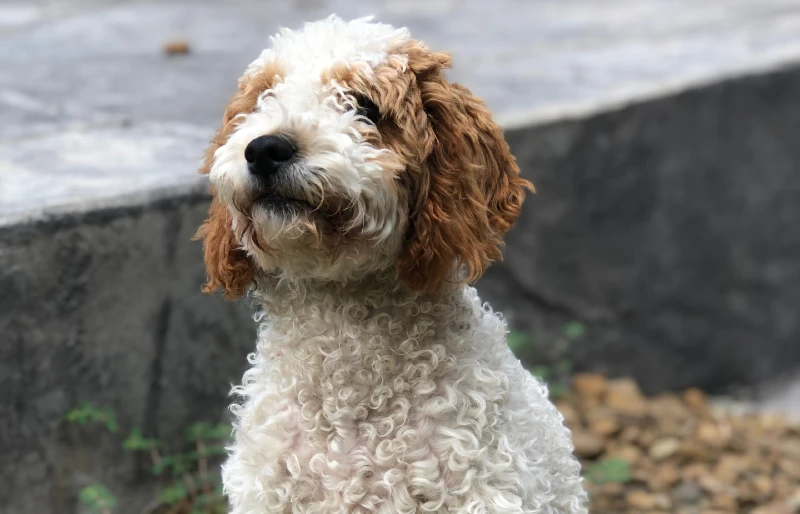
The parti pattern is typically white and another color. This differs from the abstract pattern in which less than 50% of the color is white. Parti is 50% white with 50% of another dominant color, most commonly apricot or tan.
This pattern results from a recessive gene and is rare in Goldendoodles.
17. Phantom Goldendoodle
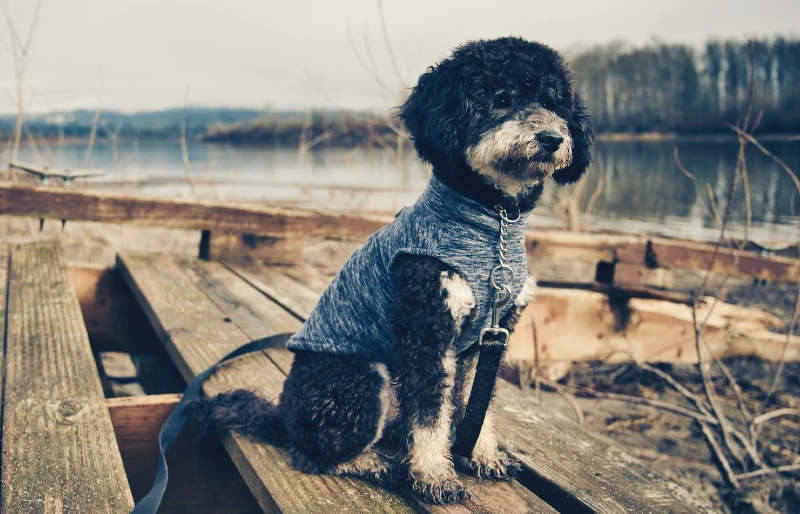
A rare pattern, the Phantom, consists of a base shade, usually solid black or chocolate, and a lighter color. The lighter color tends to be found on the muzzle, around the eyes, and legs. The most common Phantom color variation for the Goldendoodle is black and tan. But the lighter highlights can be other colors, such as red and silver.
Both parents must have the recessive gene for the puppy to inherit this pattern.
18. Tuxedo Goldendoodle
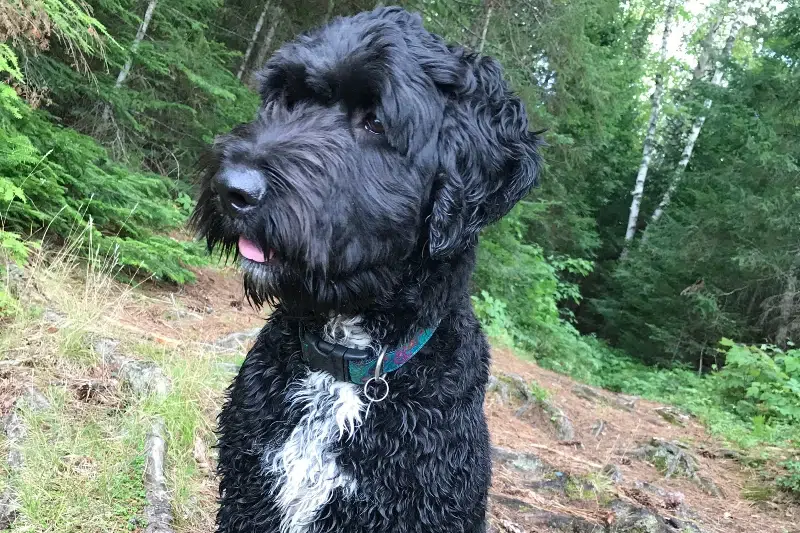
The Tuxedo pattern is similar to the Parti except that the white is concentrated on the chest, belly, and hind legs, giving the dog the appearance of wearing a tuxedo. This doesn’t mean the other dominant color must be black (though it is a striking combination), as it can be any color.

What Color Can You Expect Your Goldendoodle Puppy to Be?
Many Goldendoodle puppies are born with one solid color that might lighten as they mature. This is called “clearing.” If the color stays the same, it’s called “holding.” Many Goldendoodles hold their puppy color on their muzzles and ears even when the rest of the coat lightens.
When choosing a puppy, it’s recommended that you aim for one with a darker coat color than what you are hoping for. That way, when the colors fade, as they usually do, you’ll have an adult Goldendoodle with a coat color that you love.
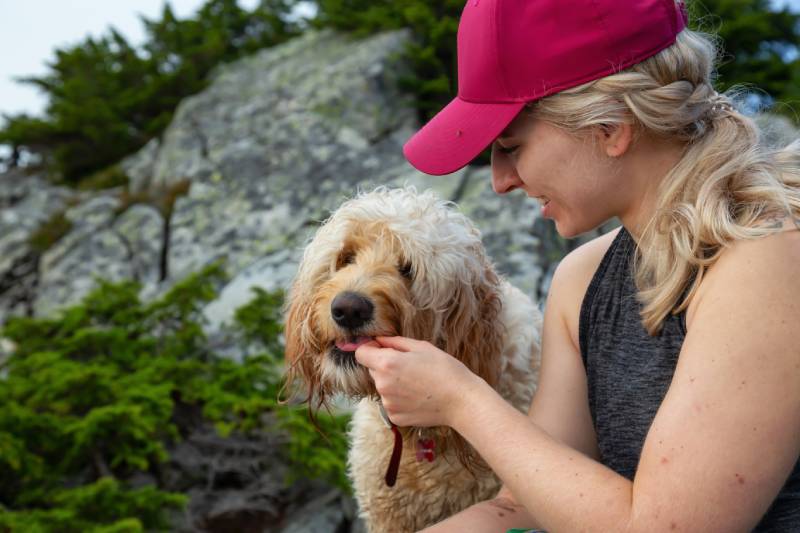
Why Do Goldendoodles Come In So Many Colors?
The AKC recognizes 11 Poodle colors, which can come in 16 other color combinations (not recognized). Golden Retrievers only have three recognized colors, which are dark golden, golden, and light golden.
It’s due to their Poodle parents that Goldendoodles have such a wide range of colors and patterns.

Conclusion
It’s interesting to consider the wide variety of coat patterns and colors that a Goldendoodle can have. Their coats can also be straight, wavy, or curly, so each Goldendoodle’s coat is distinct. But underneath all the fur, regardless of the color, the most important thing is that they are in good health and are well-adjusted. So, the moral of the story is that the color of the dog doesn’t matter, but what they bring to you and your family does.
See also:
- Goldendoodle vs Golden Retriever: The Differences (with Pictures)
- 15 Adorable Goldendoodle Haircuts (With Pictures)
Featured Image Credit: ALTEREDSNAPS, Pexels
